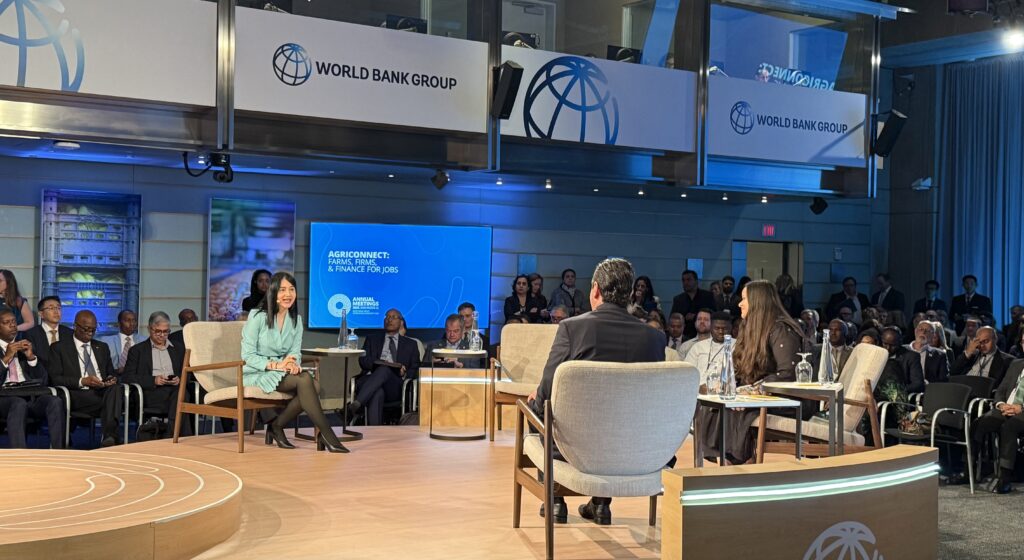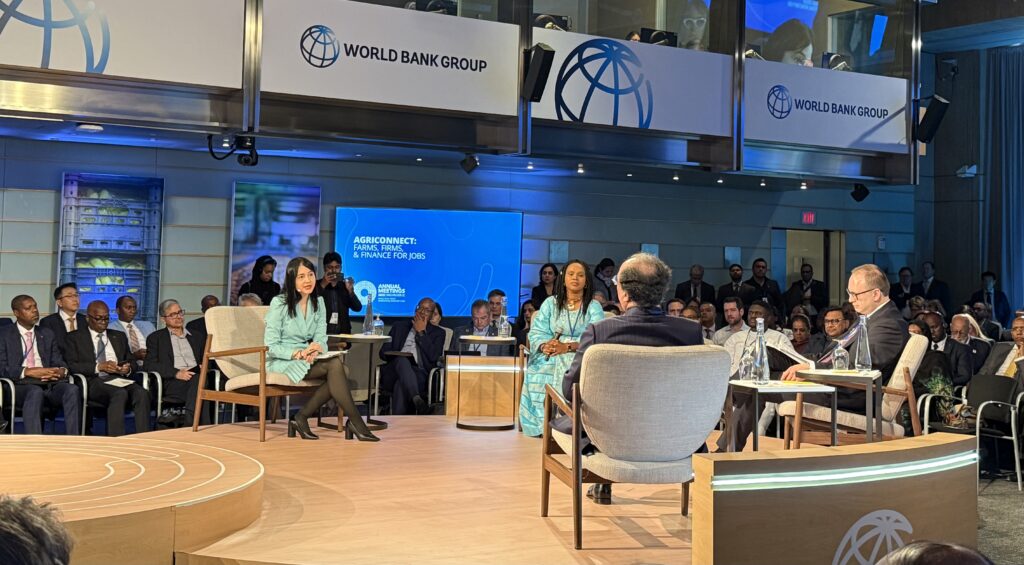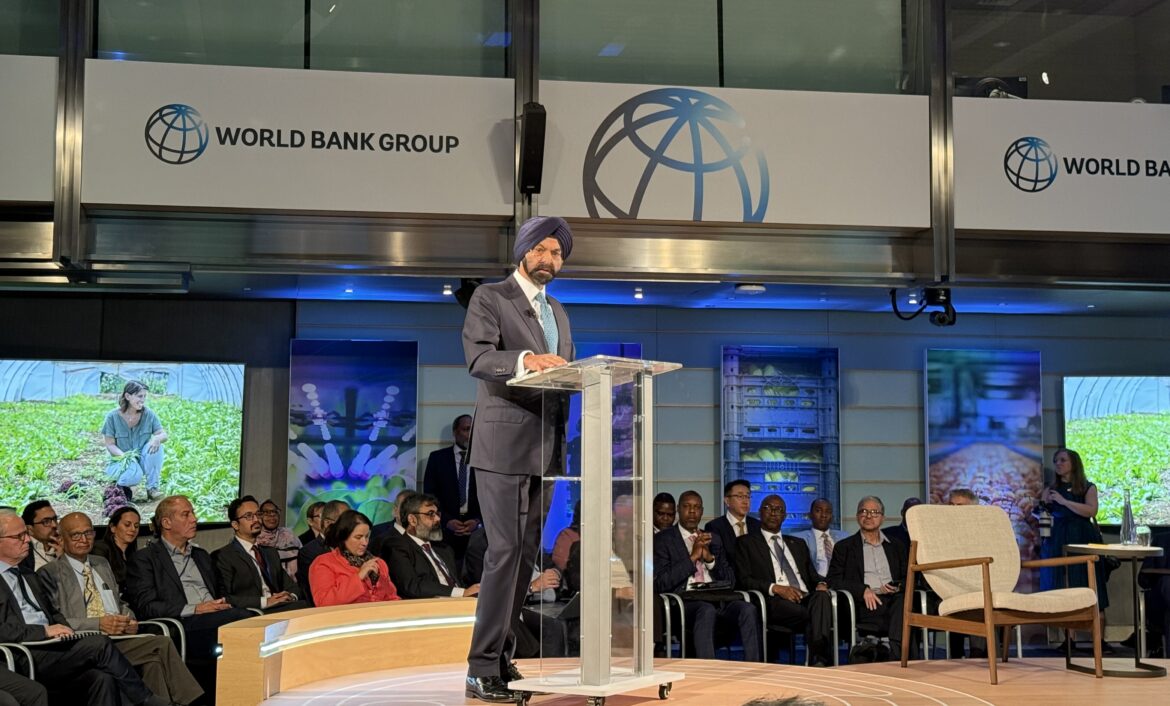World Bank Group President Ajay Banga announced that the institution aims to double its agribusiness commitments to $9 billion annually by 2030, with plans to mobilize an additional $5 billion to strengthen global food systems and empower smallholder farmers.
Delivering his remarks at the World Bank Flagship Event, “AgriConnect: Farms, Firms, and Finance for Jobs” held at the World Bank’s Preston Auditorium on October 14, 2025, during the Annual Meetings of the World Bank and the International Monetary Fund (IMF), Banga emphasized that the new target is rooted in proven field experience and lessons learned globally.
Banga identified “foundation, co-ops, resilience, and digital” as the four key pillars of the approach, highlighting their successful integration in India’s most populous state.
“This isn’t theory. In India’s Uttar Pradesh, I saw all this come together—the foundation, co-ops, resilience, and digital—and it delivered. Proof of concept: it works, and it scales,” he said. “That is the ecosystem we intend to replicate wherever possible. But it only succeeds if government, business, and development partners row in the same direction.”

He noted that the World Bank is now moving toward large-scale implementation of these strategies, beginning with robust policy and infrastructure foundations such as land tenure clarity, reliable irrigation, rural roads, storage, and cold-chain power. The focus, he said, must remain on small farmers who often lack access to inputs, credit, and markets.
Through producer organizations linking farmers to suppliers, insurers, buyers, and lenders, he said, “farmers can access advice, working capital, and predictable market routes,” thereby boosting productivity and income.
Banga added that resilience must be built from the outset—with heat-tolerant seeds, soil rejuvenation, efficient irrigation, and reliable insurance mechanisms that prevent a bad season from becoming a bad year.
Stressing that “digital is the glue that holds the system together,” he said AI tools accessible via basic phones can diagnose crop diseases, optimize fertilizer use, predict weather risks, and enable secure payments. The resulting data trail builds credit histories, lowers borrowing costs, and attracts lenders, creating a sustainable cycle of agricultural growth.
Banga underscored that agriculture remains central to development, noting that the challenge today is to make it a driver of “jobs, income, and food security at scale.” He said the goal is not just to grow more food but to turn agricultural growth into a business that raises smallholder incomes and drives economic opportunity.
“Over the next 10–15 years, about 1.2 billion young people in developing countries will come of age, but current trends suggest only 400 million jobs will be created,” he said. “That delta—hundreds of millions—will either power the global economy or spill over into unrest and migration.”
He reiterated that job creation has become the World Bank Group’s central mission, explaining that while most jobs ultimately come from the private sector, the public sector often initiates momentum. “Countries move along a continuum: early on, the public sector drives job creation; over time, private capital and entrepreneurship take the lead.”
Banga explained that the Bank’s three-pillar strategy aligns with this trajectory: “build infrastructure and skills; create predictable regulations and a business-friendly environment; and back investors with risk tools that crowd in capital.”

When discussing future opportunities, Banga said job growth potential lies in five key sectors: infrastructure, agribusiness, healthcare, tourism, and value-added manufacturing.
“Today, we’ll focus on agribusiness—central both to jobs and to meeting global food demand that is projected to rise more than 50 percent in the coming decades,” he said, emphasizing that emerging markets are at the heart of both goals, with developing nations holding the essential resources: “land, sun, water, and people.”
Nidhi Pant: Renewable Tech Empowering Women Farmers
At the event, Nidhi Pant, Co-Founder of Science For Society (S4S Technologies), detailed how their initiative supports smallholder women farmers through renewable energy-powered equipment such as solar or biomass-based dehydrators, grain millers, and milk evaporators.
Through this initiative, women farmers can now produce value-added products like ketchup instead of just selling raw produce, she said, noting that technology and access to finance have been crucial enablers.
Pant also described challenges faced by women farmers, particularly limited access to credit due to patriarchal land ownership norms. S4S partnered with the State Bank of India to offer affordable loans at 6 percent interest, significantly lower than the 31 percent charged by non-banking financial institutions.
She added that by establishing direct supply chains with large food and FMCG companies, women farmers can sell their produce directly to corporate buyers, meet high-quality standards, and attract additional credit support from banks.
Aurangzeb: Pakistan’s Push for Climate Resilience and Market Reforms
Addressing the challenge of climate resilience, Pakistan’s Minister of Finance Muhammad Aurangzeb noted, “About 24 per cent of our country’s GDP is associated with agriculture, and about 95 per cent of the farmers are subsistence level farmers because they own less than five hectares,” adding that key issues revolve around finance, storage, and the broader value chain.
From the government’s perspective, Aurangzeb emphasized deregulation of export-oriented crops and greater access to financing for farmers, suggesting that policies should support crops that perform well in the private sector while advancing deregulation.
The event, moderated by Senior External Affairs Officer and Media Partnerships Lead at the World Bank Group, Tanvir Gill, featured multiple high-level speakers highlighting innovation, inclusion, and collaboration as the future pillars of sustainable global agriculture.






